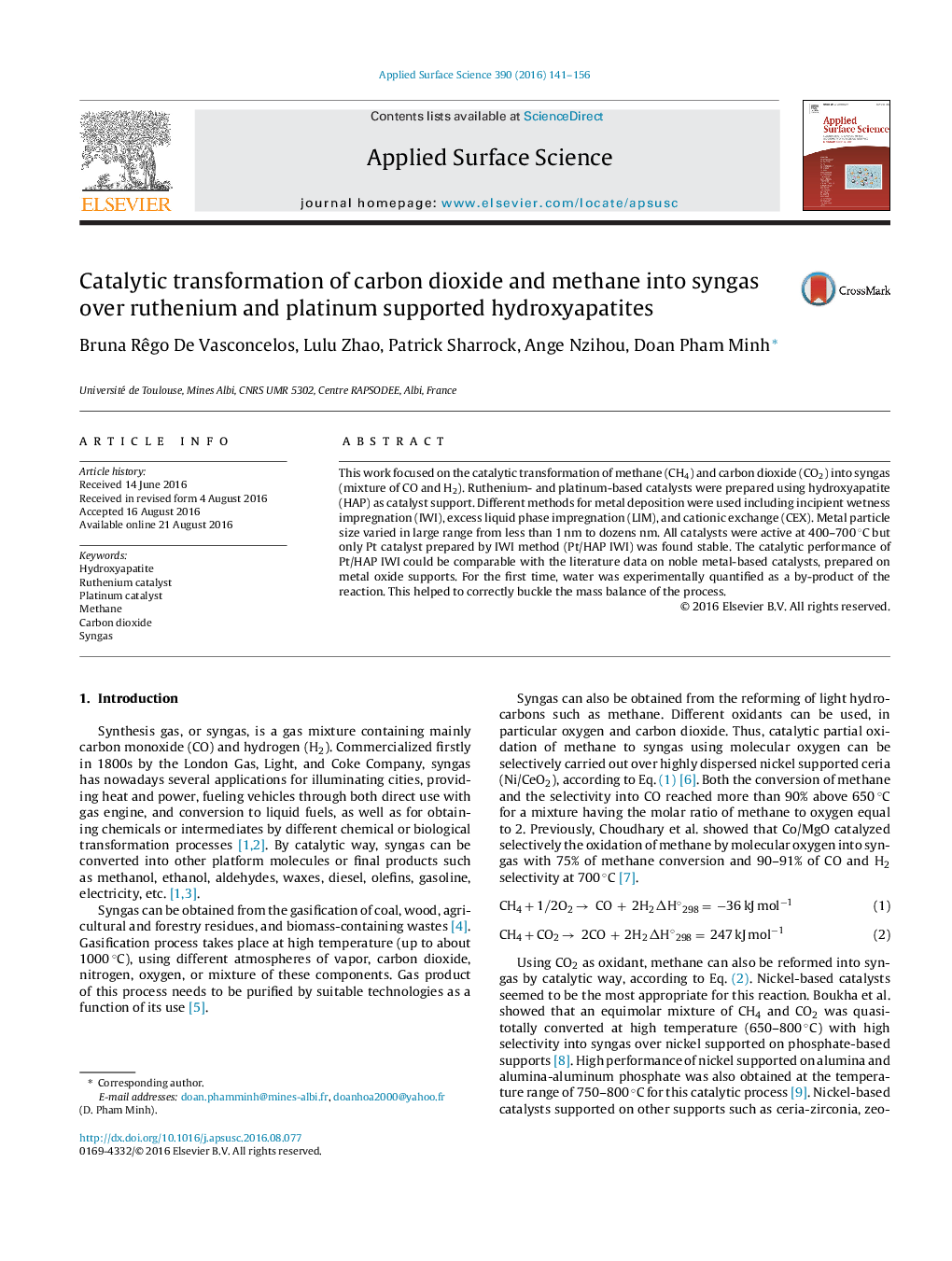| Article ID | Journal | Published Year | Pages | File Type |
|---|---|---|---|---|
| 5355332 | Applied Surface Science | 2016 | 16 Pages |
Abstract
This work focused on the catalytic transformation of methane (CH4) and carbon dioxide (CO2) into syngas (mixture of CO and H2). Ruthenium- and platinum-based catalysts were prepared using hydroxyapatite (HAP) as catalyst support. Different methods for metal deposition were used including incipient wetness impregnation (IWI), excess liquid phase impregnation (LIM), and cationic exchange (CEX). Metal particle size varied in large range from less than 1 nm to dozens nm. All catalysts were active at 400-700 °C but only Pt catalyst prepared by IWI method (Pt/HAP IWI) was found stable. The catalytic performance of Pt/HAP IWI could be comparable with the literature data on noble metal-based catalysts, prepared on metal oxide supports. For the first time, water was experimentally quantified as a by-product of the reaction. This helped to correctly buckle the mass balance of the process.
Related Topics
Physical Sciences and Engineering
Chemistry
Physical and Theoretical Chemistry
Authors
Bruna Rêgo De Vasconcelos, Lulu Zhao, Patrick Sharrock, Ange Nzihou, Doan Pham Minh,
